 Your new post is loading...
 Your new post is loading...
When it comes to the future of computing, there is one major known and a principal unknown.
The known, with almost guaranteed certainty, is that the next era of computing will be wearables. The unknown, with commensurate guaranteed uncertainty, is what these wearables will be and where on your body they will live.
Apple and Samsung, for example, are betting on the wrist; Google, the face. A slew of tech companies believe clothing will simply become electronic. Yet there’s a whole new segment of start-ups that believe all of the above are destined for failure and that we humans will become the actual computers, or at least the place where the technology will reside.
Their enthusiasm is on an emerging class of wearable computers that adhere to the skin like temporary tattoos, or attach to the body like an old-fashioned Band-Aid.
Some 40,000 bottles of Malibu rum are being shipped with NFC tags and go on sale Sept. 1. (In the how-sausage-is-made department, the NFC tags are applied to the bottles by passing them through a heat tunnel, which allows the tags to be smartphone readable after application.)
The bottles go on sale starting in 1,600 Tesco stores in the U.K.
No mobile app is required and consumers can use their phones to tap the bottles to unlock five digital experiences, according to SharpEnd....
This skin patch monitors the alcohol levels of the wearer accurately enough to be used by police when testing potential drunk drivers. But law enforcement isn’t its only use. An individual could choose to wear their own patch and have it send wireless updates of their blood alcohol levels to their smartphone.
The sensor, which comes from the University of California San Diego, comprises two parts. The first is a temporary tattoo that sticks to the skin and delivers a drug, pilocarpine, to induce sweating. The tattoo also contains detectors that are highly sensitive to ethanol in the generated sweat.
The user then applies the electronic part over the top of the tattoo, which stays in place using magnets. This controls the sensing operation, as well as transmitting the raw data over Bluetooth to a waiting device, most likely a smartphone....
Amazon Prime day is here, giving shoppers yet another day (Cyber Monday, Black Friday, Ruby Tuesday*) to hunt for bargains online.
If you’re not a Prime member already – there’s a 30 day free trial on offer, so there’s no need to miss out.
Here are 5 of the top wearable tech deals we’ve found and, don’t worry, we’ve checked that these are genuine bargains and not just reductions on hiked up prices in the lead up to the big sale day…
Retail may have a bright future with light-based communication.
In what is seen as potentially driving new revenue for retailers and brands, another global company is launching a connected lighting platform, bypassing Wi-Fi and cellular connections to reach consumers in stores.
The new technology, using LED lights as a communication channel for the Internet of Things, comes from Firefly Wireless, a new company formed by LightPointe Communications, a worldwide manufacturer of outdoor wireless communications....
Nearly 250 years later, in a world defined by technological change, we see the same fears and concerns. As of September 2015, Amazon had 30,000 Kiva robots automating its warehouses, increasing efficiency and reducing the need for pick-and-pack labor. And at the same time, demand for software developers continues to rise, as Marc Andreessen’s famous 2011 statement that “software is eating the world” becomes ever more true.
Over the next decade, we’ll see this pattern play out once more in the nascent Internet of Things (IoT). With an industry defined by “bringing physical things online,” many IoT business models are predicated on improving efficiency by eliminating labor. We see companies connecting garbage cans to the internet to improve the efficiency of deploying waste collectors — which means we’ll need fewer waste collectors. Drones are dramatically reducing the time it takes to survey a plot of land — which means we’ll need fewer surveyors. Every industry that involves electronics or equipment can expect to be disrupted in this way over the next 10 years.
So the same question that was asked in the late 1700s remains: Will this new technology eliminate jobs? No....
According to two new reports, Jawbone is having some major problems.
According to Tech Insider, the company has stopped making its Up fitness tracker. Additionally, the company has sold-off its remaining inventory at a discount to a reseller.
When reached for comment, a Jawbone spokesperson told Mashable that it “wasn’t commenting on the speculations made in the reports today but we can say with certainty that we are not selling our fitness tracker business.”
That statement isn’t necessarily at odds with Tech Insider’s report. It’s very possible Jawbone is planning to restart production later (if it has indeed stopped). It could also be selling off older inventory in the lead-up to release a new device. It’s been more than a year since the last flagship Up device was released.
Fortune also reported that Jawbone is trying to sell-off its speaker business. The company might be best known for its fitness trackers, but it got its start selling phone headsets and, later, Bluetooth speakers.
Who could imagine being wowed by a garbage can? In our age of technological whiz-bang, not much floors us anymore. But I confess, I couldn’t stop thinking about the lowly garbage can.
Embedded with smart sensors, it alerts city workers when it’s ready to be emptied, which slashes fuel costs and avoids unnecessary garbage pickups. That may not sound so impressive — at least compared to driverless cars or sending regular folk into space — but when the dumbest of items gains intelligence, we need to pay attention.
We are entering a phase in the cleantech revolution where we are reaping efficiency value from even the most mundane items.
“The garbage app reduces energy costs by 50% to 60%. That’s not pie-in-the-sky — those are real savings for real cities that can make them even more livable and enjoyable for residents,” says Tim Wolf, Global Director of Marketing for Smart Grid Solutions at Itron.
While many companies, big and small, have been jumping into the wearables space in recent years, the use-cases for these devices often feels superficial — with fitness perhaps the most compelling scenario at this nascent stage. Yet smartwatches have far richer potential than merely performing a spot of sweat tracking.
The other problem with the current crop of smartwatches is the experience of using apps on wrist-mounted devices does not always live up to the promise of getting stuff done faster or more efficiently. Just having to load an app on this type of supplementary device can feel like an imposition.
If the primary selling point of a smartwatch is really convenience/glanceability the watch wearer really does not want to have to be squinting at lots of tiny icons and manually loading data to get the function they need in a given moment. A wearable needs to be a whole lot smarter to make it worth the wearing vs just using a smartphone.
At the same time, other connected devices populating the growing Internet of Things can feel pretty dumb right now — given the interface demands they also place on users. Such as, for example, connected lightbulbs like Philips Hue that require the user to open an app on their phone just in order to turn a lightbulb on or off, or change the colour of the light.
Which is pretty much the opposite of convenient, and why we’ve already seen startups trying to fix the problems IoT devices are creating via sensor-powered automation....
The current projection data from Cisco is that the IoT (Internet of Things) will reach 50 Billion devices by the year 2020! Visualized by the NCTA (National Cable & Telecommunications Association) as the Growth in the Internet of Things.
Today’s Internet is driven by wired and wireless networks, keeping us connected throughout our daily lives. With the advent of new digital devices that constantly link us to the Internet, these networks have become much more than just a simple vehicle for information and communications. They now enable us to track our daily habits, monitor our health, manage home energy use and track nearly any other data we can imagine. These devices make up what we call the Internet of Things – a web of connected objects that are linked via networks that can interact with each other and with us.
The Internet isn’t merely developing, it’s exploding, and the numbers prove it. Take a look at our graphic below — it shows the advancing surge of connected devices using the Internet.
Today, there are more connected devices than there are human beings on the planet. This expansion isn’t just from cell phones, tablets and computers – it’s thanks to toothbrushes, stovetops and millions of other devices that now have IP addresses. Estimates show that there will be over 50 billion connected devices by 2020.
Fast, ubiquitous Wi-Fi and increasing home broadband speeds will drive the Internet of Things and the ever-expanding web....
Welcome to Part 2 of our latest blog series giving you early access to the upcoming BrainXchange-Hewlett Packard Enterprise white paper, which examines several real-life use cases of wearables at work in different enterprise operations. In Part 1, we shared an example of how an advanced collaboration platform like HPE’s MyRoom/VRG coupled with wearable technology could revolutionize the automotive recall process for a major auto manufacturer. Today we will see how a heavy machinery manufacturer could use wearables to provide remote support and on-the-spot training to its partners and customers. The complete white paper will be available for free download on May 18th. Sign up today to receive the white paper directly in your inbox when it goes live.
Using only the highest quality of beer brewing ingredients, you'll be able to select your recipe from a library of hundreds of master recipes and, with the push of a few buttons, you'll have perfect beer in as little as one week. Fully customizable and community-integrated, it will change the way you both brew and experience beer for the rest of your life!...
Consumers still aren’t completely sold on the idea of wearables. According to a survey of more than 1,000 American consumers by Colloquy, nearly two-thirds (63%) believe wearables are too expensive. At the same time, more than half (52%) said they don’t know enough to fully understand them. “The perception is because of the newness [of the devices], you’re going to pay more,” Jeff Berry, Colloquy’s research director, tellsMarketing Daily. “The ‘too expensive’ comment may be more about the perception of the devices than the reality for consumers.” Also, a third (35%) of consumers said they viewed the devices as a passing fad that may not be worth the investment....
|
While a lot of behavioral change will come with the Internet of Things, some people are attempting to cause a bit of that change right away.In a push to help shoppers save money, a company has created a programmable handbag with built-in robotics that causes the bag to vibrate, flash and self-lock when the shopper enters a ‘danger spending zone.’ The iBag2 (yes, there was an earlier version, which launched in Australia a while back), is the brainchild of the personal finance website finder.com in the U.K. The rather high-tech bag was designed by a New York fashion designer and a team of engineers crafted the robotics features....
Wearables continue their streak with yet another increase in the number of health and fitness trackers hitting the market.
Fitbit continues to lead the field, having shipped 4 million fitness trackers just in the second quarter of this year, according to a new report.
Total shipments of basic bands, comprising mainly health and fitness trackers, passed 9 million units in the last quarter, according to Canalys.
Following Fitbit is Chinese maker Xiaomi, having sent 3 million devices into the market last quarter, followed by Garmin at 700,000 devices.
Meanwhile, wearable-maker Jawbone has attempted to sell its wearable business, according to a report in The Information, though Jawbone said the story is false. Shipments of their devices didn’t even register in the report.
The future of wearables will see convergence.
This was a general consensuses from a panel of agency executives at the MediaPost IoT Marketing Forum this week.
“Wearables can add another layer of context to data,” said Marley Kaplan, who heads innovation at Kinetic Worldwide.
Chad Vavra, experience strategy and design director at Isobar, suggested that wearables will undergo a convergence and ultimately land on products that can track, monitor and sense multiple types of metrics. Vavra also said the key value for consumers will be in aggregating the data into a dashboard specifically tailored for the individual user.
Vavra pointed to the fact that he used to wear multiple different fitness trackers, but ultimately moved to a single smartwatch, which can deliver more all-around functionality.
A distinction was drawn between wearables and sensors.
Intelligent lighting systems are coming to retail and opening up potential new opportunities for consumer engagement and value propositions.
Following the long-used geofencing and newer beacons for in-store targeting, connected lights are promising to up the location ante.
A major lighting company plans to launch the light location tracking system in U.S. retail stores this year.
After successfully piloting its connected lighting system in French retailer Carrefour last year, Philips Lighting is now implementing the indoor positioning ready lighting technology across all of Carrefour’s hypermarkets in France. This gives the retailer the option to move to indoor positioning when it wants....
Believe it or not, today’s Tech World isn’t the first time Lenovo has shown off a pair of smart sneakers. Just about this time last year, the company revealed a pair of kicks with the unique ability to determine and display their wearer’s mood. How the concept wearable actually worked and why anyone might possibly want to do such a thing weren’t entirely clear, but hey, look, a happy face.
It’s not likely to get as much notice as the new Project Tango handset Lenovo showed off at today’s press event, but the company’s latest take on connected sneakers does appear to be a fair bit more subdued than the product it showed off last year.
We’re still awaiting specifics, but the smart shoes seem to have the sort of fitness data collection one would expect from such a wearable, tracking users’ distance and calories, etc. There‘s also some gaming functionality built into the product — motion tracking, perhaps? — along with LEDs embedded in the soles.
The US smart home market has yet to take off. Quirky's recent announcement that it was filing chapter 11 bankruptcy — and selling off its smart home business, Wink — highlights this well.
At its current state, we believe the smart home market is stuck in the 'chasm' of the technology adoption curve, in which it is struggling to surpass the early-adopter phase and move to the mass-market phase of adoption.
There are many barriers preventing mass-market smart home adoption: high device prices, limited consumer demand and long device replacement cycles. However, the largest barrier is the technological fragmentation of the smart home ecosystem, in which consumers need multiple networking devices, apps and more to build and run their smart home.
The smartphone that is probably within arm’s reach of you now has more computing power than the Apollo missions to the moon. No, really.
Before we get into the jaw-dropping info on this graphic, I would like to take a second to note that “teraflop” and “petaflop” are actual technical terms, and that that is awesome. Ok, back to business.
Not only is your smartphone more powerful than the Apollo missions, but your PS4 is more powerful than the late 90’s supercomputer that first beat a human at chess. 150 times more powerful, in fact. But here’s the thing that’s really going to bust your noggin – there’s more computing power in a singing birthday card than the entire Allied Forces possessed during WWII.
But the really fun stuff here is Moore’s Law and the future. Gordon Moore noted in the 70’s that the number of transistors in a dense integrated circuit was doubling approximately every two years, and predicted that it would continue to do so. In 2015 the man himself expressed doubt that his “law” would hold up for much longer, as the physical limits of cramming transistors onto a circuit is reached, but we’ll see! Quantum computing, I’m looking at you.
Dive deeper into the history of computing with this infographic about the evolution of the microprocessor....
Sony is looking into creating a contact lens that acts as a digital camera, according to a recent patent application filed by the company. The contact lens can capture still images or video using embedded sensors and camera components.
To take a picture, all you have to do is blink. The device would be able to detect the difference between unconscious and conscious blinking, allowing a person to control the device by purposefully opening and shutting their eye.
The unit would be powered by the movement of the eye, and even allow for advanced camera adjustments like aperture and shutter speed. After the images are captured, they can be transferred to an external device like a smartphone.
Eyes have become a hot "next frontier" in technology.
The failed Google Glass was just one of many stabs at face-mounted computers. Microsoft (MSFT, Tech30) and other companies are working on augmented reality headsets, which overlay computer imagery onto the real world. Other companies, such as Sony and Facebook's (FB, Tech30) Oculus, are working on completely immersive virtual reality goggles....
Wearable brands are recognizing that in order to sell products and build loyalty, the device needs to provide real-time, meaningful value that improves people’s lives on a daily and consistent basis.
Delivering meaningful information starts with personalization and monitoring behavior in order to provide relevant notifications, stats and content. The foundation of this personalization is precise location and the context it provides.
Here are 5 forward-looking devices that are getting it right....
Gartner Research predicts that the typical family home will contain as many as 500 networked devices by 2020. Similarly, Ericsson forecasts 50 billion connected “things” by the same date. Reaching these lofty projections over the next four years, however, will require a fundamental reorientation in the way that technologists and product designers work together to create successful “connected” personal devices and home appliance products. This evolution to “Internet of Things (IoT) 2.0” will be difficult for many companies to achieve — not for lack of technological expertise but because they’ll fail to recognize the value of design in connected product development.
Machine-to-machine (M2M) connectivity — the forerunner of consumer-focused IoT — has been around for decades. Overwhelmingly, those IoT 1.0 applications pushed technology to address B2B market requirements.
Product design considerations in the IoT 1.0 world are not critical to persuading customers to adopt offerings. Enterprise IoT buyers seldom require great design, because most often the buyer is not the product’s end user. Fleet logistics companies, for example, monitor the condition and location of their vehicles. Their developers focus on meeting operational and environmental requirements, caring little about the physical appearance or user experience of a dashboard- or engine-compartment-mounted device that monitors vehicle data....
At this stage in the adoption of wearable technology in enterprise, we’re all hungry for use cases to inspire and teach us. While news articles and press releases provide us with a taste of which companies are openly experimenting with wearables and the basic applications, they are by no means complete case studies.
BrainXchange recently wrote a white paper in collaboration with Hewlett Packard Enterprise examining several real-life use cases of wearables at work in different enterprise operations. These examples were gathered from HPE’s work with its real enterprise customers, and are presented in the paper – beyond the mere facts of each use case – to give you real, valuable insight into the pain points faced by today’s enterprises and how wearable solutions like HPE’s MyRoom/VRG platform are making a big difference.
Our newest blog series – of which this is Part 1 – will give you early access to the white paper content before it is made available for free download in its entirety on Wednesday, May 18th. (Sign up here to receive the paper directly in your inbox once it goes live.) Each week for six weeks, we will publish one use case from the paper. So read on to see how an advanced collaboration platform coupled with wearable technology can revolutionize remote support and eLearning for a major automotive company, and keep reading EnterpriseWear for more pre-releases and exclusive content!...
For years now, we've been hearing about how the Internet of Things will connect every object in our homes. And for years, the vast majority of those objects stay dumb.
"What companies are struggling with when it comes to the broad label of the IoT on the consumer side is what the actual problem trying to be solved is," says Rob Chandhouk, president of the sensor startup Helium. "Look at Samsung's new smart fridge, which they're marketing as the hub for your home. Do you think of your refrigerator as a hub?"
Chandhouk doesn't believe that the IoT will be making any big breakthroughs with consumers any time soon. Instead, Helium is betting big IoT's real utility is on the commercial and industrial side of things. It looks like numerous big players agree, based on a recent $20 million Series B funding round including Alphabet's investment arm GV, previously known as Google Ventures. But it's another investor in the latest round that gives us our clearest hint of where IoT is going: Munich Re, an insurance and risk management company....
|
 Your new post is loading...
Your new post is loading...
 Your new post is loading...
Your new post is loading...















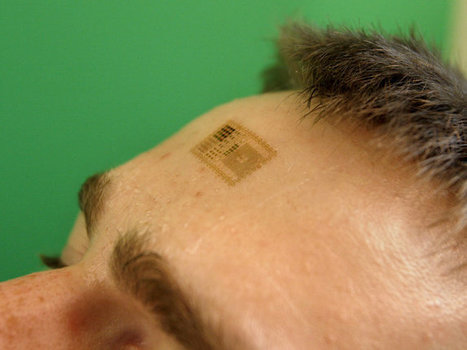


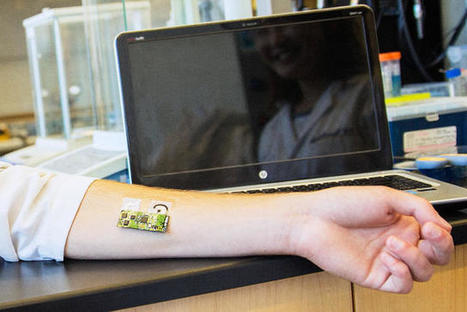
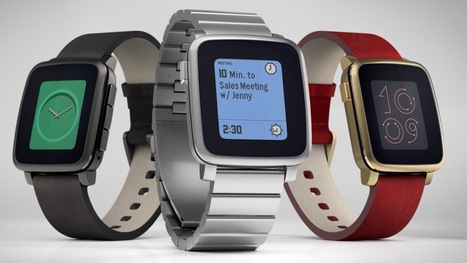

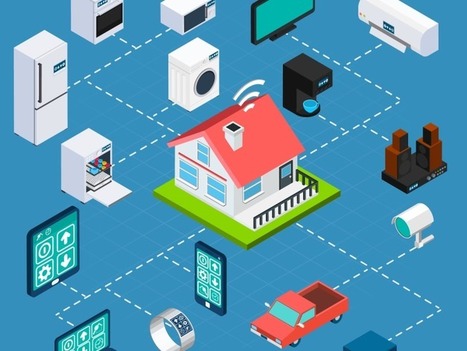
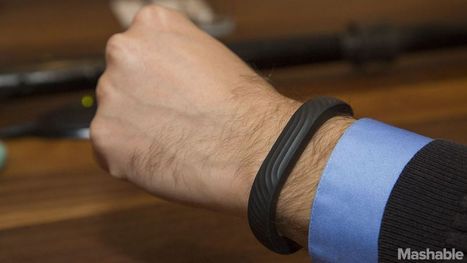






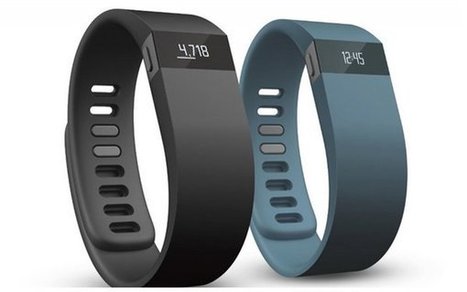


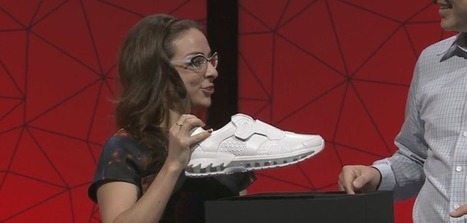
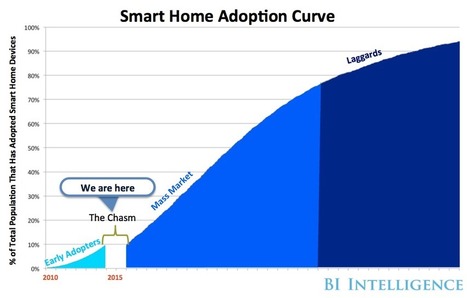
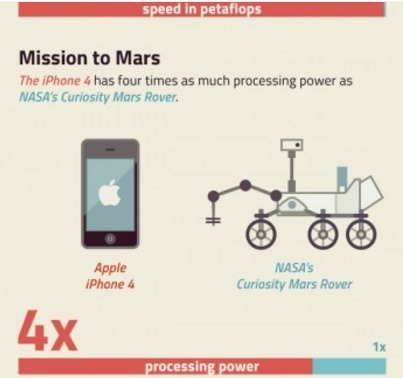
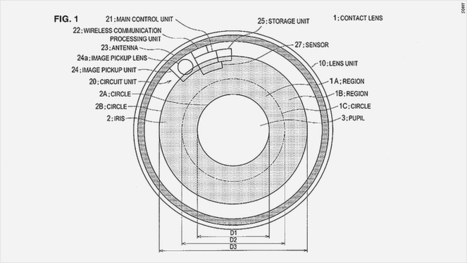




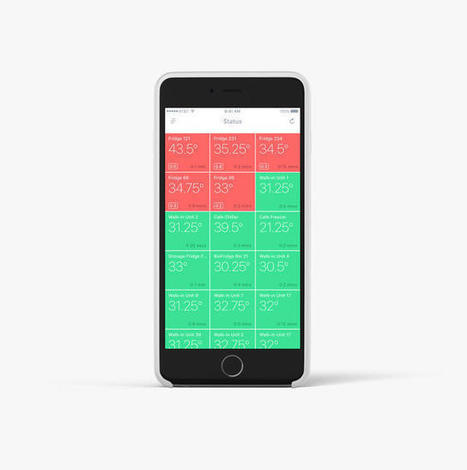





Wearables under the skin, on the skin and more, coming in the near future.